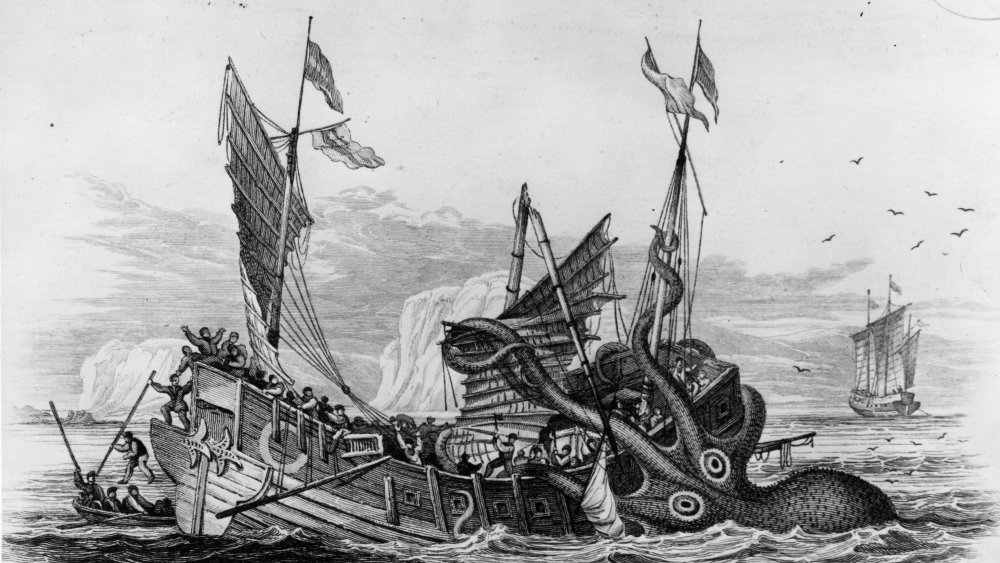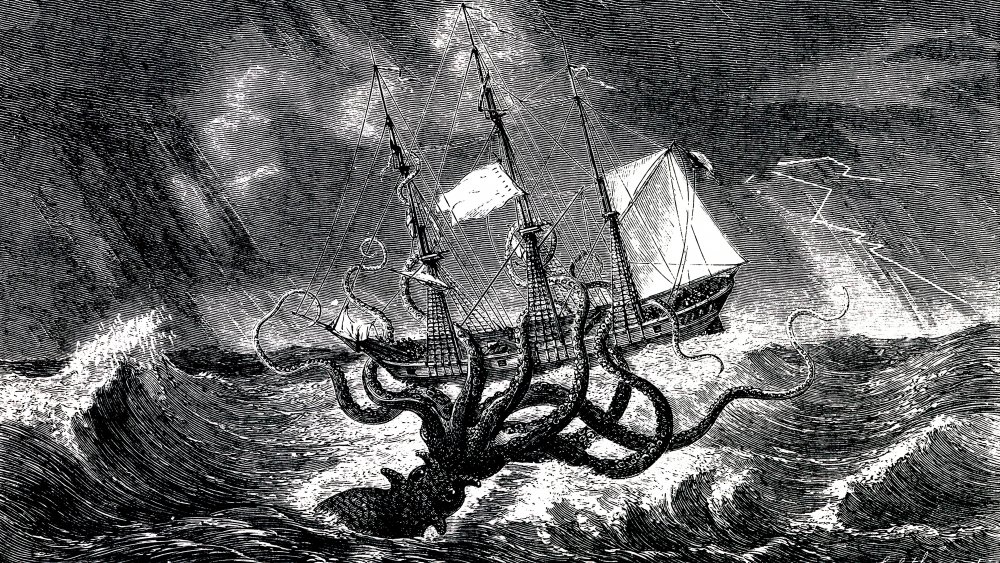There's A Chance The Kraken Might Have Existed. Here's How
There's an old saying: sailors can never hope to defeat the sea. The best sailors can hope for is that the sea doesn't defeat them. So much water, so little land, and even in the glory days of the age of sail, boats were so very small by comparison.
And there's no question but that the seas have their own challenges for human survival. Besides storms, and currents, and enormous waves, and other opportunities to drown, there are those denizens of the salty expanses who would not object to snacking on a human canape. Great white sharks get all the press (it's probably a mistake, not to mention anthropomorphizing, to suggest they're constantly in a state of hangry), but it's the makos that have the speed — 60 miles an hour or, in a more terrifying way of expressing that, a mile a minute. They aren't the biggest sharks by any means, but it's definitely a case where size doesn't matter.
So you'd think that if sailors are sitting around, spinning a yarn or two, they could stick with the actual facts of marine biology and sufficiently terrify one another. But no. Humans being humans, it's almost a moral imperative to ratchet up the chill factor by piling imaginary details onto fact. Consider the legend of the kraken.
"Hello, Beastie"
It's a fact that the ocean grows creatures with many, many arms. The garden-variety octopus has eight (hence "octo," but you probably knew that already), as does the squid, with the addition of two tentacles. And giant squid can get very large indeed. They tend to be on the shy side — as Smithsonian explains, video footage of a live specimen wasn't recorded until 2012 — but specimens have been found measuring in the 40-foot range and weighing around a ton. There's evidence that they grapple with sperm whales and recent footage emerged of a shark surviving a fight with one, says National Geographic. Those long arms. Those tentacles that shoot out to grab prey. Those suckers (no, really — there are suckers on the arms, like an octopus) that have their own sets of teeth. And a beak. Eyes a full foot across. Brr.
Are squids the inspiration for the kraken? A creature of enormous size and many arms with which to grasp and break a ship and feast on the crew? The Unmuseum says that the stories date back to 12th Century Norway, though of course oceanic beasties show up in the Ancient Greek myth of Odysseus. An 18th Century description claims a kraken could measure 1.5 miles across, which kind of sounds like a couple of sailors playing "top this!"
Still, you never know. Thwww

